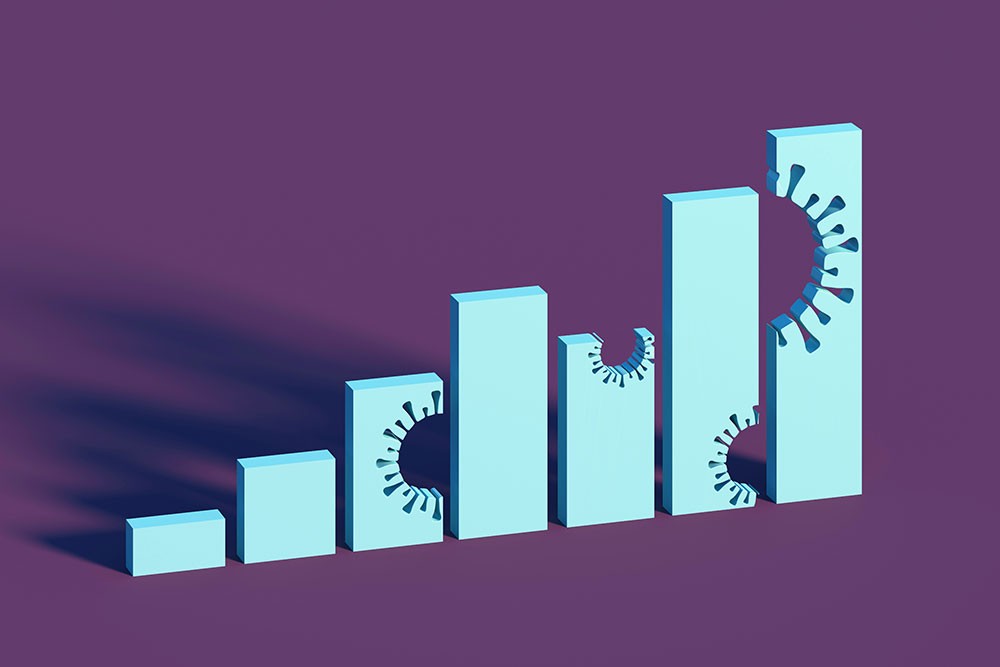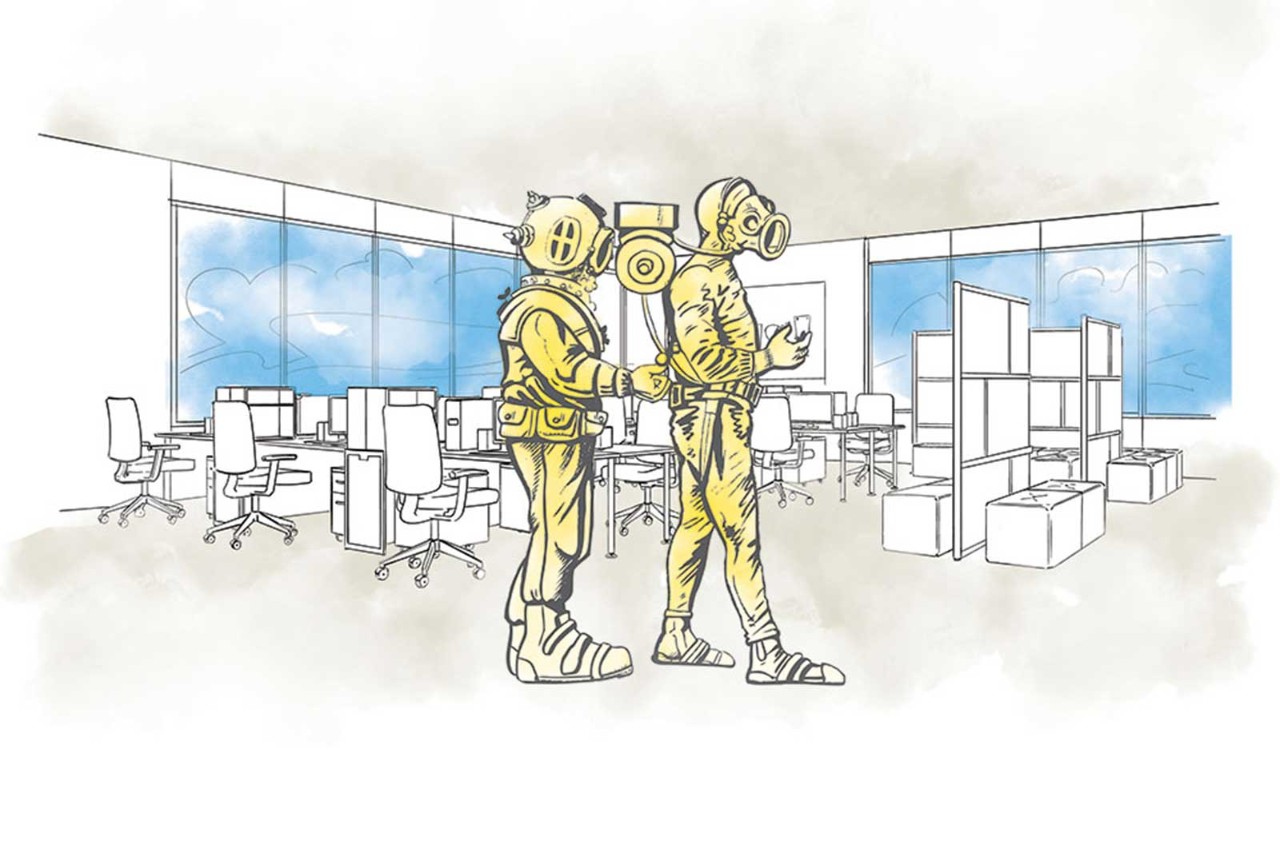
Business executives have faced not one but two key challenges over recent times. The Covid-19 pandemic has led to the swiftest decline in global output in six decades, according to World Bank forecasts, with the proportion of countries experiencing contractions in per capita GDP hitting its highest level since 1870. While companies that focus on providing home-based services – such as streaming entertainment and online shopping – have flourished, across the world a vast swathe of businesses have suffered, some mortally.
Even before the pandemic hit, though, many companies were already facing heightened uncertainty due to a shift in US policy away from free trade.
The big questions
In these conditions, what does 2021 hold in store for businesses? The main questions facing business leaders for the coming year will be: how swiftly will the global economy rebound, where will be the main areas of growth, and will uncertainties over trade abate?
On the first question, most economists are cautiously optimistic – both on the outlook for economic growth and corporate earnings. The pace of the recovery will largely hinge on the progress of the pandemic and how efficiently vaccines can be distributed, says Marc Chandler, managing partner at Bannockburn Global Forex.
‘If we see major hiccups in making vaccines widely available, or many people refuse to be immunised, then the economic recovery will be slow and patchy,’ he says. ‘But assuming all goes well, it looks like the end of the pandemic is in sight, and we should start to return to normality in the second half of the year.’
‘Companies that were on their backs for most of 2020 – airlines, restaurants, hotels and cruises – can expect to benefit from a huge pent-up demand’
That assessment is shared by many leading financial institutions. After a near 4% decline in global output in 2020, UBS is predicting a 5.6% expansion in 2021. Mark Haefele, the bank’s chief investment officer, is even forecasting a full recovery in earnings per share after a 15% fall in 2020, supported by pent-up consumer demand and stronger business investment along with continued stimulus from governments and central banks.
Growth areas
But perhaps the more interesting question for businesses is where this growth will be – both in geographical and sectoral terms. The most rapid recoveries will come in Western Europe and North America, according to Simon Evenett, professor of international trade and economic development at the University of St Gallen in Switzerland.
‘In these countries we will mostly likely see the vaccines distributed swiftly and efficiently, helping consumers return to normal patterns,’ he says. Demand in China and Japan will remain solid, since both countries coped relatively well with the pandemic, but he believes there could be greater headwinds in certain emerging markets, partly due to the greater logistical difficulties in rolling out vaccines.
‘The challenge in many parts of the world will be transporting vaccines at sufficiently low temperatures,’ he says. ‘Other nations will face other nuts-and-bolts issues, such as limitations on the ability to accept and distribute vaccines.’ That could lead to a longer lag in turning the corner economically.
The broadening recovery looks likely to have a highly variable effect on different industries. ‘Last year was a great year for technology firms providing home-based services, and a disaster for companies based on travel and personal contact, such as hospitality,’ Chandler says.
‘We should expect the biggest rebound in companies that were on their backs for most of 2020 – airlines, restaurants, hotels and cruises. These companies can expect to benefit from a huge pent-up demand from people to socialise and travel. Staycations will be out and vacations back in.’
New equilibrium
The rebalancing is unlikely to mean a complete return to pre-pandemic life, Evenett warns. ‘Zoom calls are here to stay, and we will probably see a permanent reduction in international work travel. The decline in demand for internal-combustion engine cars will probably be accelerated, with fewer people commuting to work.’
But people will be less glued to streamed video than before, with demand for live concerts and eating out likely to revive, he adds.
Many investors expect such trends to lead to a rebalancing in the fortunes of companies on the stock market. ‘We expect the more economically sensitive markets and sectors, many of which underperformed in 2020, to outperform in 2021,’ argues Haefele. The consensus forecast among analysts is for a 12% growth in technology in earnings in 2021, compared with growth of over 800% for energy companies, 84% for industrial firms and 27% for financials.
Trade winds
Along with this rebalancing, experts are also hopeful that uncertainty over trade will abate with the election of Joe Biden as US president.
‘We shouldn’t get overexcited,’ says Simon Lester, a trade policy expert at the Cato Institute in Washington. ‘Biden is unlikely to unwind the tariffs on China put in place by President Trump, and the strategic rivalry between the two nations will remain intense.’
But, along with other trade experts, Lester is expecting Biden’s negotiating posture to be more predictable, less confrontational and more multilateral. ‘That would be good news for businesses, since it makes it easier for them to make long-term investments without worrying so much that they will face additional tariffs or restrictions,’ he says.
Evenett agrees. ‘We are unlikely to hear the constant threats to impose tariffs on European car exports that we got from the Trump administration. And we don’t see Biden using tariffs so readily as an instrument of foreign policy, as Trump did not just with China but also with the likes of Turkey and others.’
Risks remain in 2021, economists agree, especially if hopes of a swift rollout of vaccines are dashed or if the virus mutates to make vaccines less effective. But overall, the outlook for 2021 looks bright, with the prospect of a rebound in consumer demand along with a reduction in global trade tensions. That should mean a less stressful year for business leaders.



